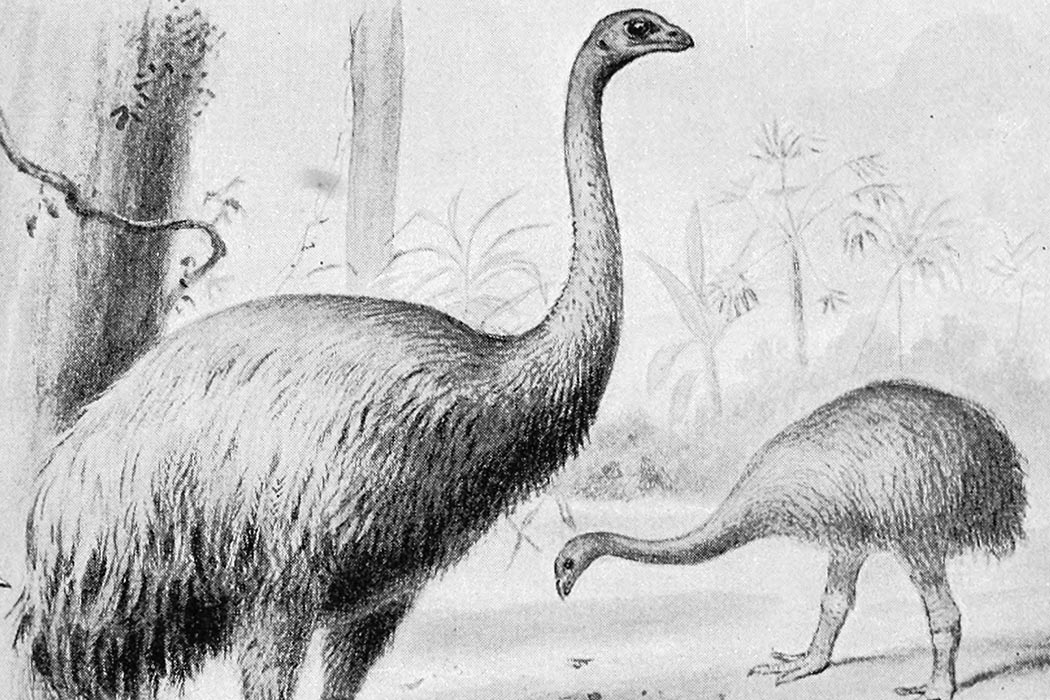The disappearance of the giant flightless moa bird in New Zealand is a cautionary example of how quickly humans can render a species extinct. However, it turns out that a relatively small number of people are required to accomplish this dubious feat. New research suggests that the human population in New Zealand numbered no more than 2500 at the time of the moa’s extinction.
That is far less than previous estimates, and calls into question research absolving humans of mass extinctions in other areas due to their small populations. How did such a small population wipe out such a large, established animal in less than 100 years?
Accounts of moas in Maori tradition are numerous. A 1925 article in the Journal of The Polynesian Society describes how the moa was highly prized by the Maori. The article describes the process of ambushing a 12-foot tall moa in the undergrowth, armed only with a spear. The meat was steamed, and apparently for ceremonial reasons, cooked only by males. Meat was a particularly choice dish for the Maori, and the feathers were prized for decorative purposes.
Nevertheless, even if the early Maori highly prized the moa, how could such a small human population catch all of them? The 1925 article (backed up by more modern research) notes how moa bones are abundant in archaeological sites all over the islands, so clearly they hunted a lot of moa. Habitat modification and eating eggs would have further pressured the population, but still, without any other factors at work, the Maori would have needed to devote basically all of their time to moa hunting to achieve such rapid extermination.
Gemmell et. al., writing in 2004 in Proceedings: Biological Sciences, suggested that maybe the Maori had help from external forces. They suggest that moa numbers were declining before the arrival of the Maori, part of a cyclical swing in moa populations. If the Maori arrived in a down swing of the cycle—the researchers estimate a moa population of 159,000 when the Maori arrived—then it becomes easier to see how so few humans could exterminate the birds.
In order to put numbers on it, I created my own rough back-of-the-envelope calculation using Gemmel’s 159k number as a starting population. The Polynesian Society article suggests a typical clutch size of 30 eggs. There are no direct statistics on moa survivorship, so I used ostriches, where about 1.5% of eggs survive to become an adult ostrich. Assuming a starting population of 1500 Maori and a steady growth to a population of 2500, no matter how the parameters were adjusted the Maori only needed to harvest less than one moa/person/year to render the population functionally extinct within 70 years (keep in mind that some of the 1500 had to be children, and thus not hunting their own moas).
The new analysis of the moa’s decline is disturbing. While small numbers of humans probably can’t exterminate a species so quickly on their own, ecosystems rarely operate in a vacuum. There are always other factors, e.g. climate, or competition from existing species, that can hasten a species’ decline. For good measure, the extinction of the moa also caused the extinction of its only known predator, the enormous Haast’s eagle, and several others as well. The New Zealand experience shows that small numbers of humans can threaten entire ecosystems, let alone species, and our population continues to grow. Curbing population growth will not be sufficient.







